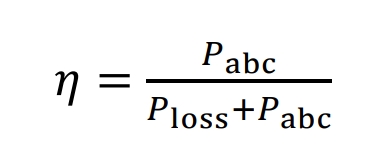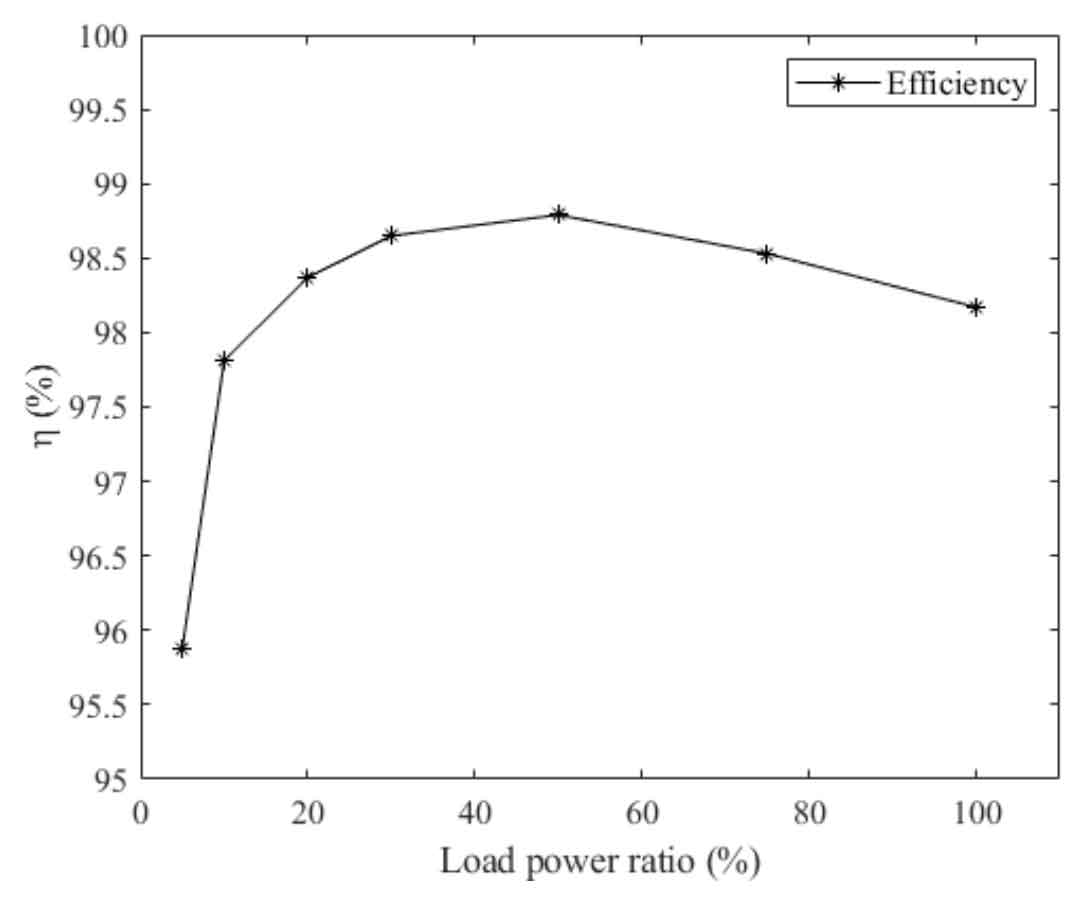As an important indicator of solar inverters, conversion efficiency directly reflects economic and environmental benefits. China requires a maximum conversion efficiency of no less than 96% for transformer free solar inverters. The conversion efficiency of solar inverters is generally expressed as the ratio of output power to input power. The proposed two-stage inverter structure can be considered to have an input power equal to the sum of the loss power and the three-phase output power:

Ploss represents the loss power, Pabc is the total three-phase output power, and PIN is the input power, then its conversion efficiency η It can be expressed as:

Due to the large range of changes in the output power of solar cells within a day, their conversion efficiency will also change accordingly. In order to objectively reflect the conversion efficiency of solar inverters at various output powers, it is necessary to provide the efficiency under different proportions of full load power. Generally, proportion coefficients are taken as 5%, 10%, 20%, 30%, 50%, 75%, and 100%, respectively. Calculate the loss power of the solar inverter under different output power conditions, and use the formula to calculate its conversion efficiency. The obtained result is represented by a line graph:

When the load power accounts for 5% of the full load power, the conversion efficiency is the lowest, at 95.88%. When the load power accounts for 50% of the full load power, the maximum conversion efficiency is 98.79%, which is higher than the maximum conversion efficiency of several different modulation methods proposed in reference [65] applied to boost type two-stage solar inverters. This proves that the three-level adjustable two-stage solar inverter proposed in this paper can indeed improve the maximum conversion efficiency of two-stage solar inverters.
According to the actual solar radiation and sunshine hours in different regions, the average power is calculated by weighting each power range, with the most typical being the European efficiency formula and the California efficiency formula. In 2013, Beijing Jianheng Certification Center and other units drafted and certified the technical specification “China Efficiency Technical Conditions for Solar Grid Connected Inverters”, which provided a weighted efficiency formula for Chinese solar grid connected inverters and pointed out that the weighted total efficiency should not be less than 91%.

According to the above equation, the weighted total efficiency of the two-stage inverter structure proposed in this article is 98.47%. The maximum conversion efficiency and weighted total efficiency of the designed two-stage solar inverter meet relevant standards, and the maximum conversion efficiency is higher than that of the traditional two-stage inverter structure, which proves the superiority of the two-stage inverter structure proposed in this paper and provides the possibility for expanding the application scenarios of two-stage solar inverters.
A three-level adjustable two-stage solar inverter simulation experimental platform was built using ATLAB. Through simulation experiments, it was proven that the two-level inverter structure can effectively reduce the switching frequency of the subsequent stage solar inverter. The unfiltered phase voltage waveform has obvious sinusoidal characteristics, and the phase voltage amplitude frequency characteristics output through LC filter are good, with a low THD. At the same time, a loss model for solar inverters under a new modulation method is established, and the conversion efficiency under different power ratios is calculated. The maximum conversion efficiency is 98.79%, which proves that the maximum conversion efficiency of the two-stage inverter structure proposed in this paper is indeed higher than that of traditional boost two-stage solar inverters. And using the weighted formula of Chinese solar grid connected inverters, the weighted total efficiency is 98.47%, which meets relevant technical standards.
